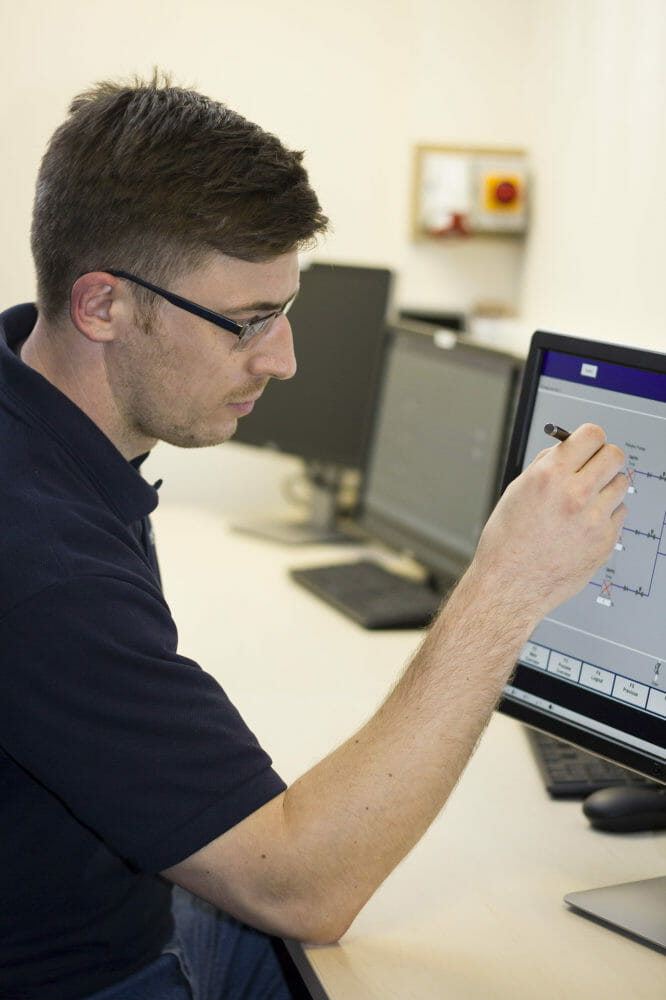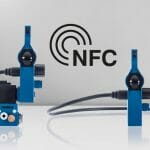On New Year’s Day 1968, the programmable logic controller (PLC) was first designed. Whilst most were busy celebrating and making resolutions, Dick Morley was planning his invention. The PLC has been used ever since to make logic based decisions in automated industrial processes. Despite their resilience and rugged design, PLC-based control systems can still break down and their failure can lead to costly downtime.
Here, James Davey, service manager of systems integrator Boulting Technology, discusses the top causes of PLC control system failure and how the risks can be minimised.
PLCs use microprocessors to digitally control industrial automated processes. Early PLCs replaced relay logic systems, but advancements over the years enabled them to cope with a larger number of inputs, processes and outputs. In essence, a PLC is a set of hardware and sequence of coded instructions that enables equipment to perform complex and reliable electromechanical functions.
A PLC will usually run constantly, despite the harsh industrial environment it operates in. Unfortunately, even this robust control system can fail sometimes, which leads to serious consequences, such as a production line or processes stopping altogether.
Downtime is extremely costly and, not only can it seriously affect plant output, with the recent advances in PLC technology that embrace safety-related functions, it can occasionally create a hazardous situation that needs immediate attention. To ensure this does not happen, businesses need to follow a planned maintenance routine.
When a PLC control system does break down, identifying the cause can be tricky. Often, a copy of the PLC software, a laptop, programming lead and a multimeter are the only tools necessary for diagnosing the fault, along with some knowledge of the processes. Sounds straightforward? In many cases it is, but the trap of complacency has a habit of biting. Below is a list of common reasons why PLC control systems fail.
I/O modules and field devices
About 80 per cent of PLC failures are a result of field devices, Input/Output (I/O) module failure or power supply issues. Typically, these defects manifest themselves as a sudden process stop or irregularity of performance. This is because the PLC control system is waiting for a signal to allow it to step through its program sequence. In this situation, the engineer usually determines where the sequence has stopped by interrogating the software ‘on-line’, with the aim of tracing the problem to a specific I/O module and input or output point.
By identifying the I/O point, the engineer can then trace the problem to its root cause. This could be a PLC configuration error, tripped circuit breaker, loose terminal block, failure of a 24 VDC supply or issues with wiring. It may be that the I/O module itself needs replacing. This relies on having a readily available supply of replacements, something that is becoming increasingly difficult for legacy systems.
Erratic behaviour or failures of groups of inputs indicate there is an internal PLC error or issue with a common power source. If the I/O module is not the reason for the failure and power and wiring issues have been eliminated, then attention should be paid to the field devices — the components external to the I/O module. These could be incorrectly configured, mechanically damaged or they could have failed electrically, for example due to water ingress.
Ground integrity
Proper grounding is important in protecting both the PLC and maintenance personnel. A well grounded enclosure can also act as a barrier to outside electrical noise. During maintenance or diagnosis, the engineer can perform a visual check of ground wiring to establish if there has been any damage or if there are any loose connections.
The engineer can test the integrity of the ground with a multimeter. By checking the resistance of the PLC ground terminal to a main earth bonding point in the equipment enclosure, we can establish if this is the root of the problem.
Power supply issues
The reliability of PLC-based control systems is dependent on having an uninterrupted power source. Power supply issues can result from a range of causes including loose or corroded cables and power supply failure.
In addition, many manufacturing facilities, utilities and infrastructure companies will usually have redundant power systems or install uninterruptable power supplies (UPS). This way, a part of the plant continues to function even in the event of a mains power failure, thus providing control of essential items in order to maintain its safe operation.
Even if an industrial plant considers a UPS nonessential and a complete process stop is manageable in the event of a power outage, a PLC’s memory can be lost when the power fails. This can lead to loss of process data, but also complete loss of operational programs. To prevent this, a PLC sometimes employs its own backup battery to ensure the device restarts correctly when power is restored.
Failure to maintain and replace the batteries in a PLC or UPS can lead to a major system failure in the event of a power outage.
It is vital to back up the PLC software regularly and store it securely. If an industrial plant fails to back up the system, it makes it incredibly difficult to resume normal function in the event of PLC memory loss. Furthermore, it turns a minor power loss incident into a major downtime issue.
Dealing with interference
Electromagnetic interference (EMI) and radio frequency interference (RFI) are common in industrial environments that contain a variety of electrical equipment. Anything from handheld radio transmitters used by maintenance staff, to a large motor starting can cause interference.
Companies need to control electrical noise as much as possible, because it can lead to intermittent faults or unusual behaviour and even PLC failure.
There are many ways to mitigate the risk of downtime caused by electrical noise through design. A Boulting Technology service engineer can recommend ways to minimise noise by relocating sensitive equipment, segregating systems with high power components and adding barriers, grounding, or shielding cable between sensitive equipment.
Network and communications
Most PLC control systems need to communicate with periphery devices such as Human Machine Interfaces (HMIs) and other ‘intelligent’ equipment. A typical communication medium will consist of an industrial network, which industrial plants increasingly base around industrial Ethernet. A loss of communication between devices will often result in immediate plant downtime.
Engineers can mitigate against communications failures by ensuring the physical network infrastructure is correctly installed and terminated, that network devices are suitable for purpose — especially when more and more devices are added — and firmware patches are regularly installed to maintain reliable and secure operation.
Heat
The environment is a critical factor in the life of equipment and control systems. Failure to service air filtration components in the control cabinet can cause insufficient airflow and cooling within the control panel. This can lead to equipment overheating and the acceleration of component failure.
Equipment will fail at high temperatures or humidity, particularly above the limits of maximum temperatures recommended by manufacturers. A high humidity can also lead to condensation forming on electrical components and, in turn, this can lead to failure. Industrial plants can mitigate by using panel-cooling systems or by considering where the control panel will be located during installation design.
Managing the risks
By following a simple best practice routine, companies can minimise the chance of PLC control system failure. Engineers should ensure the environment in which the control system operates is sound. Through systematic inspections, engineers can identify any overheating or electrical noise problems.
By regularly checking and testing batteries and UPS systems, companies ensure that in the event of a power fault, their system is reliable and operates continuously. Other maintenance activities include checking the wiring integrity, grounding, terminals, field devices, Ethernet and other industrial networks. Plant managers should regularly back-up software and install firmware patches.
Last, but not least, obsolescence management is also important becasue PLC manufacturers regularly cycle their product ranges. If you are operating with a component that is several years old, it is important to have a readily available replacement for it. Businesses can manage this internally or by using a third party, such as Boulting Technology, who is able to highlight the risks, indicate which areas of a control system are more likely to lead to failure and put a contingency plan in place to mitigate that risk, including sourcing legacy components.
Control system best practice is not all about the hardware. Regularly backing up PLC software ensures that if downtime does occur, normal function can resume quickly. Upgrading firmware also makes the system more secure because patches and upgrades eliminate known software vulnerabilities.
Although it has been around for a long time, the PLC is not invincible. However, with proactive maintenance, environment control and contingency plans, your PLC control system will be there to keep your operations up and running every day of the year, including New Year’s Day.
Boulting Technology News: https://www.boultingtechnology.co.uk/news/view/top-causes-of-plc-control-system-failure-maintenance-to-minimise-downtime
Boulting Technology Services: https://www.boultingtechnology.co.uk/service-and-support








